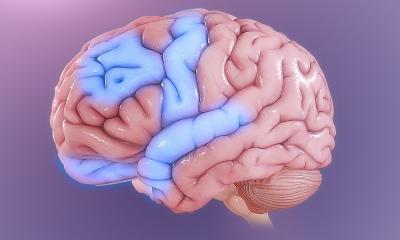
Source: Anna M. V. Gerlicher
News • Traumatized patients
Improving treatment of anxiety disorders
Traumatic experiences can become deeply entrenched in a person's memory. How can fears following a traumatic event be reduced in the long term and prevented from becoming a permanent stress-related disorder? Researchers at the Mainz University Medical Center have recently shed new light on these questions.
The key to their approach lies in firmly anchoring new, positive experiences in the person's memory. As in classical treatment, traumatized patients would first have to be exposed to their fear-inducing stimuli to learn that these stimuli are often harmless. This experience would then be made durable using a safe and simple drug treatment.
This is the only way to avoid repeatedly falling prey to unnecessary fear responses and to thus become resilient to developing a post-traumatic stress disorder
Anna Gerlicher
The researchers have been analyzing more closely the mental processes that underlie the resulting positive memory formation processes. Their findings, now published in Nature Communications, could help improve the treatment of anxiety-related problems and post-traumatic stress disorder (PTSD) and aid in the development of appropriate preventive measures.
The human brain is continually changing and can be (re)shaped by experiences – both good and bad. This is the basic premise underlying resilience research and the therapies used to treat phobias and anxiety disorders. But how do some people manage to reduce their fear, or even make use of it and turn it into new, positive experiences when confronted with a situation that would previously have terrified them? And why does this mechanism called fear extinction fail to work for other people over the long term? How does an individual's brain form and stabilize long-term memories and what is the role played by factors such as spontaneous neural consolidation processes, which occur after a new, positive experience is learned? These are the questions at the heart of the work carried out by Professor Raffael Kalisch and Dr. Anna M.V. Gerlicher together with researchers of the German Resilience Center (DRZ) and the Collaborative Research Center 1193 "Neurobiology of resilience to stress-induced mental dysfunction: from understanding mechanisms to promoting prevention" at the Mainz University Medical Center. "We already have a pretty good understanding of the neural processes that are relevant to learning that a fear-inducing stimulus no longer presents a threat. Recent studies have shown, however, that it is very important to be able to clearly remember these learning experiences. This is the only way to avoid repeatedly falling prey to unnecessary fear responses and to thus become resilient to developing a post-traumatic stress disorder,” explained Dr. Anna Gerlicher, first author of the study paper. "Therefore, we focused fully on the question of how, after such an extinction learning process, the learned experience can be consolidated in our memory."
In essence, we discovered that fear extinction memories can be relatively easily reinforced, at least in the laboratory, and in fact without any further practice or memory training
Raffael Kalisch
The team led by DRZ research group leader Professor Raffael Kalisch discovered that the brains of their test subjects exhibited specific activation patterns during an extinction learning experience, which spontaneously reappeared in a rest phase after the learning phase. The more frequently these spontaneous reactivations occurred, the better the subjects were able to recall their positive experience on a subsequent test day and the less marked were their fear responses to stimuli that would otherwise have triggered the fear response.
They also discovered that the activity patterns relevant to the memories were dependent on the neurotransmitter dopamine, known as the reward hormone. "A particularly fascinating aspect for us was that by administering a commercially available drug that intervenes in cerebral biochemistry and causes an increase in the brain's dopamine levels after extinction learning, we were able to increase the number of reactivations so that subsequent fear responses were reduced to the same extent. In essence, we discovered that fear extinction memories can be relatively easily reinforced, at least in the laboratory, and in fact without any further practice or memory training,” added Kalisch. The researchers see their findings as offering potential for gaining new insights into the fundamental mechanisms of memory formation and for developing possible new ways to improve the prevention and treatment of post-traumatic stress.
Source: Mainz University Medical Center
12.12.2018










